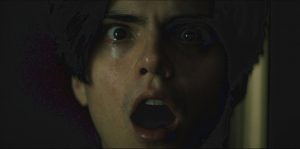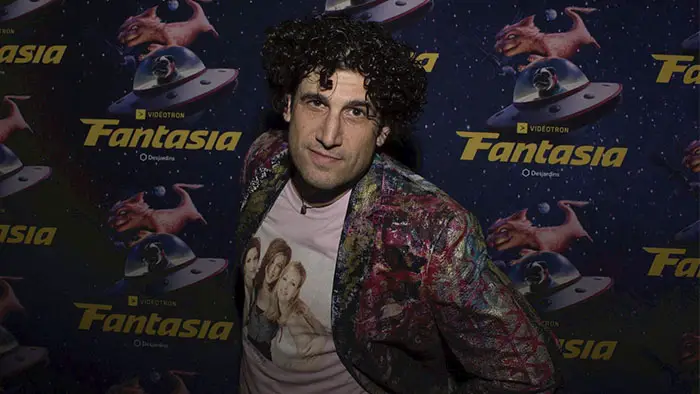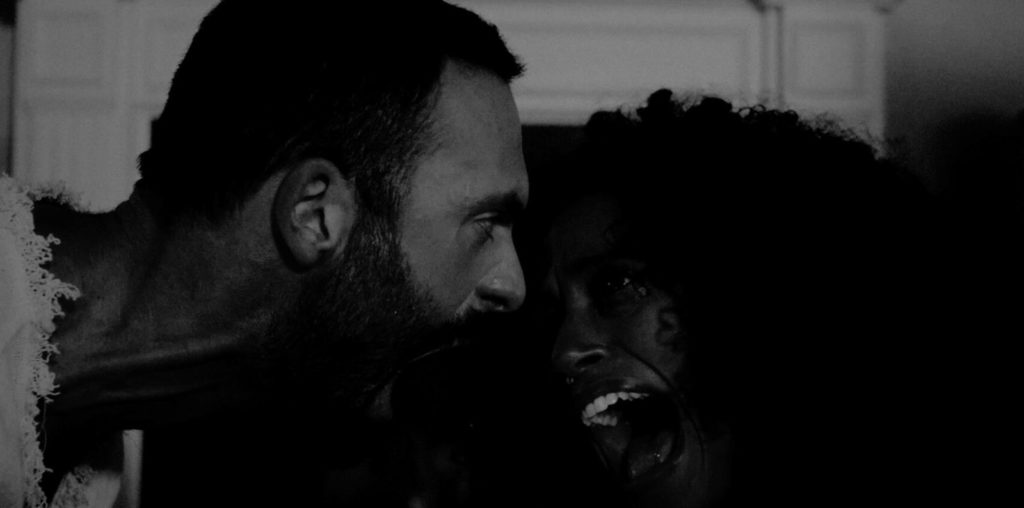
Daniel Isn’t Real is based on the novel, In This Way I Was Saved, by author Brian DeLeeuw. The film follows Luke (Miles Robbins) as he is conflicted with traumatic episodes as a college freshman, suddenly his childhood imaginary friend, Daniel (Patrick Schwarzenegger), resurfaces to escort him along the way.
In my interview with writer/director Adam Egypt Mortimer, he explained how he adapted the novel to the screen and how he visually depicted imagination by smearing both reality and the supernatural horror elements as one. The director took us deeper into Luke’s inner world and the intricate relationship between him and Daniel. The interview with Adam Egypt Mortimer is below.
What was your thought process in adapting the novel to a live-action film?
It was interesting because the novel was written from Daniel’s point of view. He is the imaginary friend, the narrator, we are in his head the whole time, and we’re getting his take on what human beings are like. I adapted the novel with the novelist Brian, and immediately we decided not to do that. We said, let’s flip it and make it about Luke. It was interesting how we felt there was a lot of DNA in the book that we loved and a lot of story structure, but we also felt very free to change it in favor of making things cinematic.

Photo Credit: Julie Delisle Photographe
“…one kid gets an imaginary friend, then something goes wrong, and he puts that imaginary friend away…”
This central structure of starting with kids; one kid gets an imaginary friend, then something goes wrong, and he puts that imaginary friend away, and then he comes back later in life. That was all there in the book, and we put that in the movie. Then there’s this sense of cosmic horror and demonic visualizations, which were not in the book that fit more and more in how to tell this the story in a cinematic way. We would explore different avenues, and we were always in agreement about it.
You mentioned schizophrenia in the movie. What research did you have to do regarding schizophrenia? What did you learn?
Brian DeLeeuw (the author) did a lot of technical research for writing the novel. For me, what attracted me to the story and how I wanted to tell it was from personal experience. A lot of the story was based on what I went through with a friend of mine, that had a very intense mental break. Thinking back, my memory from not understanding what was happening was hard to comprehend. I had to drive to the mental hospital and handle that. It feels like we’ve had a total break from reality in part because we’re manic and not sleeping and not doing cool, fun stuff. That was such an important aspect of making the movie, and in designing what it would feel like. I was tapping into those memories and trying to make it cinematic. Obviously, it’s a genre film, and this is why I love horror movies when you take them very seriously is that those feelings can be so big and so scary that they do feel like cosmic horror, they do feel like demonic. I feel like it’s my way of expressing the truth of that to elevate things and into a genre.

